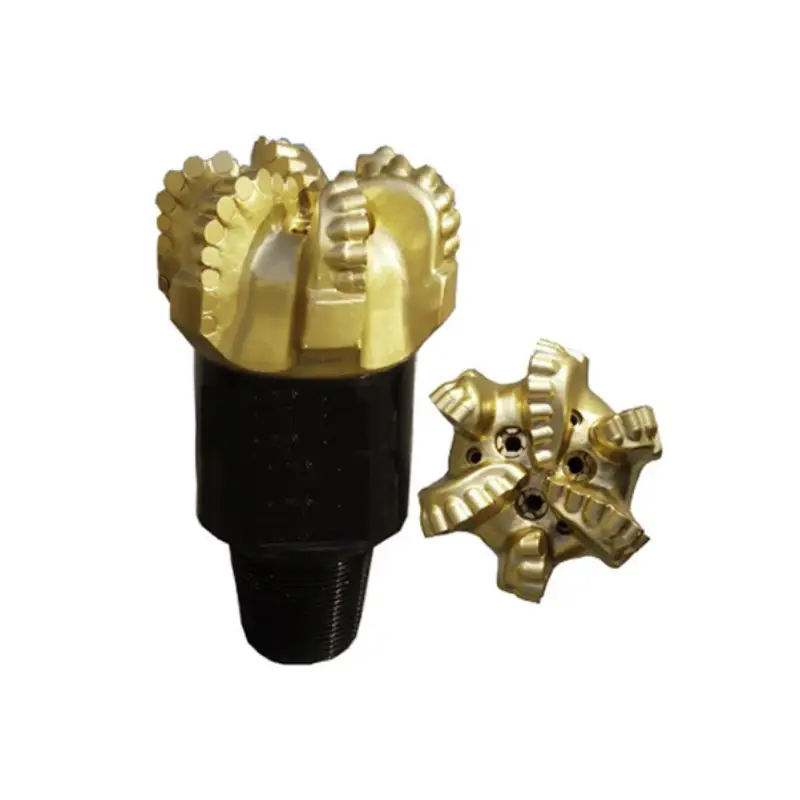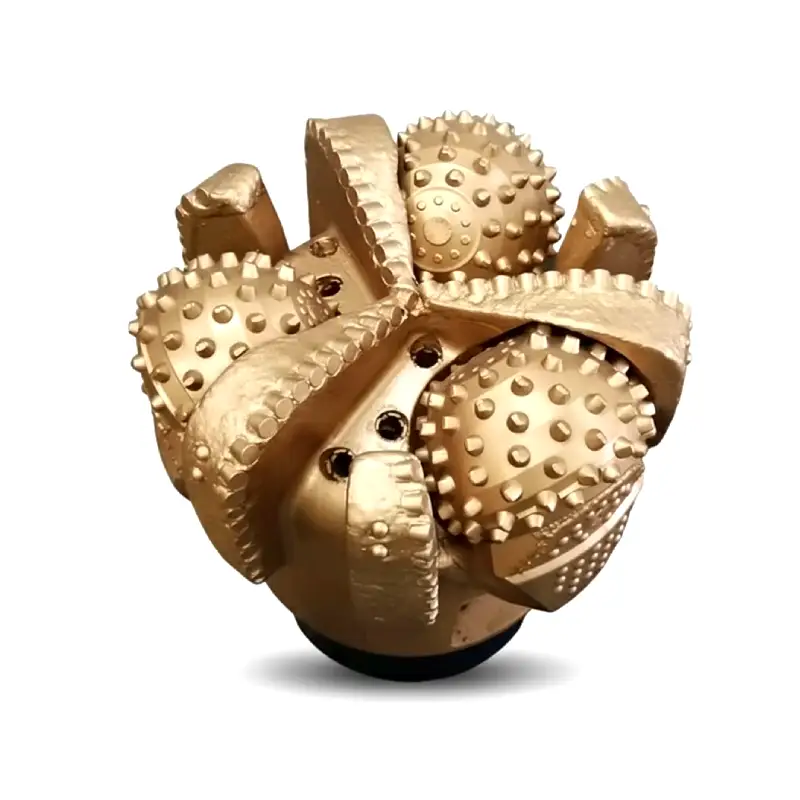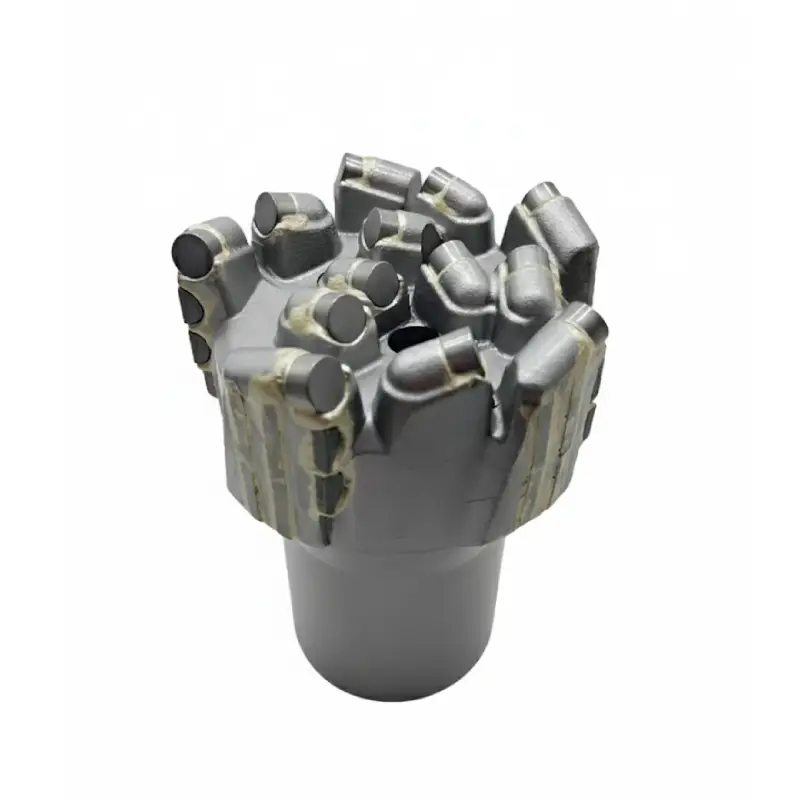PDC Technology has transformed the drilling industry, particularly in complex well construction. These Polycrystalline Diamond Compact bits are essential for directional drilling, offering a cutting-edge alternative to traditional roller-cone technology. Their unique design delivers a new level of performance, making ambitious well trajectories achievable.
Mastering a wellbore’s path is critical for accessing hydrocarbon reserves and geothermal energy. This blog explores how the precision cutters of PDC bits enable superior steerability and Rate of Penetration (ROP). It’s an in-depth look at the technology driving modern, high-efficiency drilling operations worldwide.
What is PDC Technology?
PDC Technology in the drilling industry refers to Polycrystalline Diamond Compact drill bits, which are fixed-cutter bits that have revolutionized modern well construction. Unlike older bits that crush rock, PDC bits use cutters with a super-hard synthetic diamond layer bonded to a tungsten carbide substrate. This design allows the bit to shear, or slice, through rock formations with exceptional efficiency, leading to a much higher Rate of Penetration (ROP) and significantly longer bit life.
The core of PDC Technology is the PDC cutter, which is permanently fixed to the bit body, eliminating moving parts and reducing the risk of failure downhole. PDC bits are a preferred choice for drilling in medium to hard formations like shale, sandstone, and limestone, and they are essential for directional and horizontal drilling due to their consistent performance and steerability. Continuous advancements in cutter geometry and material composition further improve their durability and thermal stability.
What PDC Technology Requires
Maximizing the superior cutting power of PDC Technology requires a carefully calibrated approach, moving beyond just having the right bit. Optimal performance depends on precisely matching the tool to the geology and establishing perfect downhole conditions through managed operational parameters.
To achieve peak efficiency and cutter longevity, PDC technology requires:
- Optimal Drilling Parameters (WOB & RPM): The Weight on Bit (WOB) and Rotational Speed (RPM) must be fine-tuned to the formation. Too much weight or speed can cause damaging vibrations, while too little slows penetration. Finding the sweet spot—typically lower RPMs for harder rock and higher for softer—is essential to maximize the ROP and protect the diamond cutters.
- Effective Hydraulic Management: Proper flow and pressure of the drilling fluid are critical for cooling the PDC cutters, which generate intense heat from friction. Sufficient fluid circulation is also needed to effectively remove cuttings from the bit face and the wellbore, preventing a common issue known as “bit balling” in sticky formations.
- Formation-Specific Bit Design: The bit’s geometry must be tailored to the rock. Soft formations require fewer, larger, more aggressive cutters to maximize depth of cut, whereas hard, abrasive formations demand more blades and smaller, highly durable cutters with less aggressive rake angles for enhanced stability and wear resistance.
- Stable Bottom Hole Assembly (BHA): Uncontrolled downhole vibration, often called stick-slip or bit whirl, is the primary enemy of PDC cutters, leading to rapid chipping and failure. A stable BHA with the right stabilizers and damping tools is required to ensure the bit rotates smoothly, maintaining continuous and controlled contact with the rock.
All Types PDC Drill Bits



Polycrystalline Diamond Compact (PDC) drill bits are not a single tool but a diverse family of fixed-cutter bits engineered for various downhole environments. The right choice depends on the formation, drilling application, and desired rate of penetration (ROP). This overview categorizes the main types of PDC drill bits based on their body construction and cutting elements.
Matrix Body PDC Drill Bits
Matrix body PDC drill bits are constructed by infiltrating a mold with tungsten carbide powder and a metallic binder. This body is highly resistant to erosion and corrosion, making it the top choice for drilling through highly abrasive or high-temperature formations. Though more costly to manufacture than steel bodies, their superior durability ensures longer runs in challenging environments.
Steel Body PDC Drill Bits
Steel body PDC drill bits are machined from high-strength alloy steel, allowing for greater design flexibility, larger junk slot areas for improved cuttings removal, and easier repairability. They are tough and offer excellent resistance to impact loading. However, they are more susceptible to erosion in abrasive formations, making them best suited for softer to medium-hard, less abrasive rock.
Hybrid PDC Drill Bits
Hybrid PDC drill bits combine the shearing action of fixed PDC cutters with the crushing action of traditional roller-cone (tricone) elements. This versatility makes them ideal for drilling interbedded formations, which feature alternating layers of hard and soft rock. The combined design protects the fixed cutters from sudden, damaging impacts, ensuring stable and efficient drilling through variable lithology.
How to Choose Suitable PDC Drill Bits for Your Project?
Selecting the appropriate PDC drill bit is the single most critical decision for maximizing drilling efficiency and minimizing cost per foot. A suitable bit must be a perfect mechanical and hydraulic match for the target rock formation and the available rig power. This careful selection ensures a smooth, fast, and durable run.
The primary factors to consider when selecting a PDC drill bit are:
- Formation Hardness and Abrasiveness Soft formations require aggressive designs with large cutters, high cutter exposure, and fewer blades to maximize ROP. Conversely, hard, abrasive rock demands a highly durable PDC drill bit with more blades, smaller cutters, and a robust matrix body to withstand wear and impact.
- Drilling Environment (Body Type) The choice between a matrix body PDC drill bit and a steel body PDC drill bit depends on fluid conditions. Matrix bodies resist erosion in abrasive mud systems, while steel bodies offer greater resistance to impact and are more cost-effective to repair for multiple uses in less abrasive environments.
- Desired Rate of Penetration (ROP) Project objectives directly influence the bit’s aggressiveness. For maximum ROP in a homogeneous soft-to-medium formation, an aggressive bit with a high cutter back rake is chosen. For stability and longevity in complex, interbedded sections, a less aggressive, more durable design is preferred.
- Available Rig Hydraulics and Power The bit’s Total Flow Area (TFA) and nozzle configuration must be optimized for the rig’s pump capacity. Proper hydraulics ensure efficient cooling of the PDC cutters and effective removal of cuttings from the bit face, preventing bit balling and cutter thermal degradation.
Conclusion
The era of simple, straight-down drilling is over; today’s complex energy landscape demands the precision and efficiency offered by PDC Technology. These innovative fixed-cutter bits, with their durable diamond elements, have proven indispensable for directional and horizontal drilling. By enabling longer runs and superior steerability, PDC bits significantly reduce operational costs and Non-Productive Time (NPT).
Ultimately, the key to success in mastering intricate well plans lies in the quality of your equipment. Investing in advanced PDC drill bits means investing in maximized drilling efficiency and a greater return on your well assets. The cutting action of precision PDC cutters is simply unmatched for performance and reliability in diverse formations.
To equip your next project with this top-tier drilling advantage, look no further than our catalog. You can get wholesale PDC drill bits from our Sinodrills to ensure you receive the quality, durability, and technological edge required for any demanding drilling application. Upgrade your fleet today and experience the difference precision makes.


